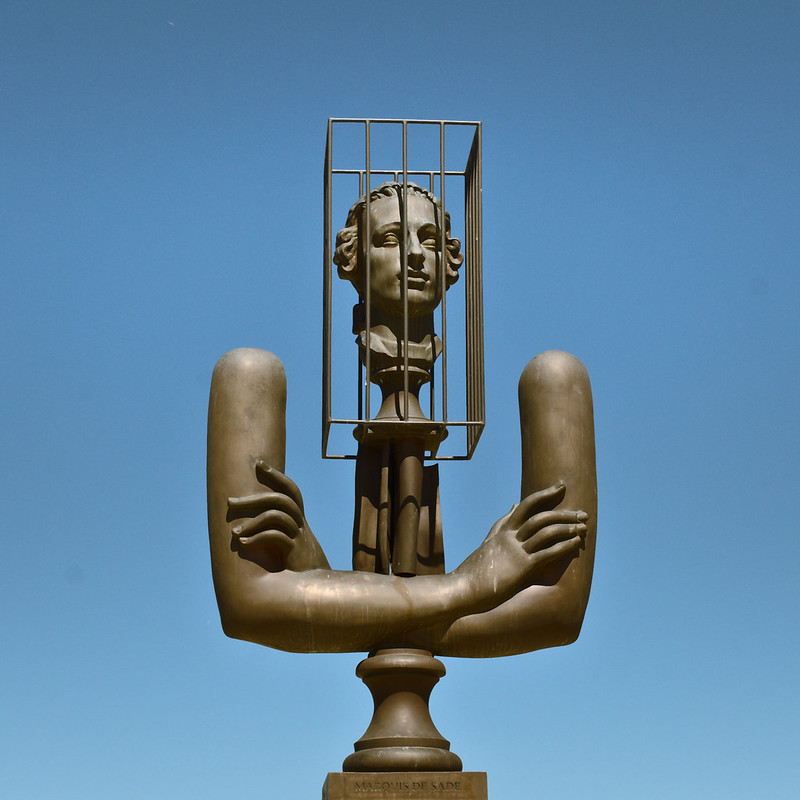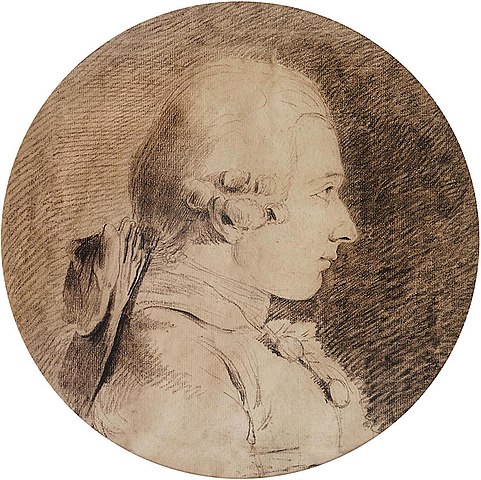The Most Scandalous Statue in France? Meet the Man Behind the Cage

If statues could talk, this one would have a lot to say. A head trapped in a cage. Arms locked in a strange, twisted embrace. It looks more like something out of a surreal nightmare than a tribute. But that’s fitting, because the man it represents was anything but ordinary.
Welcome to Lacoste, a tiny village in Provence, home to one of France’s most notorious figures: Marquis de Sade.

Who Was the Marquis de Sade?

The short version? A writer. A philosopher. A nobleman. A scandal magnet.
The longer version? A man so controversial that his name literally became a word: sadism. He spent much of his life either locked up (because of his writings and personal exploits) or on the run (because of the people who wanted to lock him up).
Born in 1740, Donatien Alphonse François de Sade (yes, that’s his full name) lived a life of excess, rebellion, and outrageous storytelling. His books, filled with dark themes and explicit content, were banned, burned, and whispered about in horrified fascination. The French Revolution set him free, but Napoleon made sure he was locked away again.
Why Is There a Statue of Him in Lacoste?
The Marquis de Sade lived in the Château de Lacoste, a grand estate perched over the Luberon hills. When he wasn’t getting into trouble in Paris, he was here, writing stories that would make even today’s most controversial authors blush.
Fast forward a couple of centuries, and fashion designer Pierre Cardin bought the ruins of de Sade’s château and restored parts of it. He also commissioned this statue – a bronze tribute to the man who once called Lacoste home.
But why the caged head? Well, de Sade spent more than 30 years of his life in prison or asylums, locked away for his radical ideas. This sculpture is a reminder of both his wild mind and the society that tried to control him.
His crossed arms likely reflect defiance, a kind of “you can’t break me” attitude. And that’s very much in line with de Sade’s character. Even when imprisoned, he kept writing. Even when his books were banned, they survived. The statue’s body language suggests resistance -he’s trapped, but he’s not giving in.
Another way of seeing it is that De Sade had a knack for ruining his own life. He was born into nobility, had wealth, power, and influence… and then lost it all, mostly due to his own actions. The arms could represent self-imposed imprisonment.
Love Him or Hate Him, You Can’t Ignore Him
Even today, people debate whether de Sade was a misunderstood genius or a dangerous provocateur. But one thing’s for sure, he left his mark. And if you ever find yourself wandering through Lacoste, this eerie statue will make sure you don’t forget it.
Would you visit? Or would you keep your distance?
***
Cover photo: Archives Départmentales du Vaucluse
